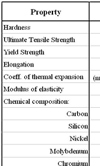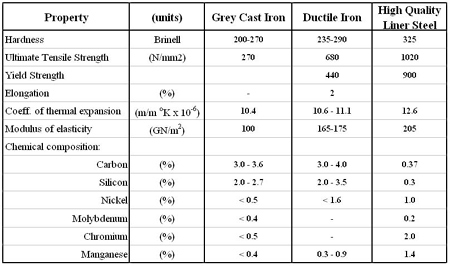The steel liner
 When it comes to liner technology, the temptation is always to think in terms of cast iron - whether it be grey cast iron or one of the more recent ductile - or aluminium. Each takes its lead from the cylinder block supporting them and therefore, for reasons of thermal expansion, sound engineering sense seems to suggest that we stick to the same generic material.
When it comes to liner technology, the temptation is always to think in terms of cast iron - whether it be grey cast iron or one of the more recent ductile - or aluminium. Each takes its lead from the cylinder block supporting them and therefore, for reasons of thermal expansion, sound engineering sense seems to suggest that we stick to the same generic material.
There are exceptions though. Hypereutectic aluminium alloys (aluminium alloys containing more than 12 % silicon) for instance can be used successfully in cast-iron blocks where the lower rate of expansion is comparable, and of course cast-iron liners can be used successfully in aluminium blocks. But there is one material that is regularly used in many engines, particularly diesels, and which is only seldom used in competition engines - steel.
In general, cylinder liners don't fail from lack of strength. So when you look at the properties of a typical liner steel it is often difficult to understand why you might want to use it. Grey cast iron has a tensile strength somewhere around 400 N/mm2, and very rarely have I seen a cylinder liner break. Certainly I've seen them shatter when hit by the occasional stray connecting rod but I can't say I've ever seen them fail through overload.
In terms of stiffness, ductile iron is getting on for almost twice that of grey cast and is only slightly less than that of the steels specified. So if stiffness is the benefit, why doesn't everyone else use it?
On closer analysis, however, and when seeking advice from those in the know, the real benefit would seem to be the hardness of the steels and the uniformity of the grain structure when compared to that at the surface of cast or ductile iron. Essentially low-carbon tool steels they consist of small amounts of chromium, nickel and molybdenum uniformly distributed throughout an iron matrix. The surface of the cylinder bore is therefore much better at accepting wear resistance coatings than grey or ductile iron it replaces.

So when lubrication is marginal, usually around the top ring reversal point in highly loaded engines, the nickel silicon carbide, Nikasil-type coating will be more coherent and less likely to fail than a similar coating on a grey cast or ductile iron liner. The harder the surface, the more wear-resistant it will be. This could allow the use of more aggressive piston ring technology without the horrific wear that would otherwise accompany it.
Used only in cast-iron blocks, for applications such as drag racing, steel cylinder liners made from chromium nickel molybdenum alloy tool steels do seem to make sense. Having made a considerable investment in a cylinder block in terms of detailed preparation, the last thing you might want to do is scrap it because of worn or damaged bores. Reclaiming it using a low-carbon steel liner can bring it back to life again and create a reliable low-friction surface at the same time.
Steel liners have been used for a long time and are nothing new. Used in heavy-duty diesel engines as well as many piston aircraft, when fully developed they can give thousands of hours of reliable use. But in competition engines they could be viewed either as a sign of desperation or the pinnacle of cast-iron block technology.
Fig. 1 - Comparison of the properties of iron and steel liners
Written by John Coxon